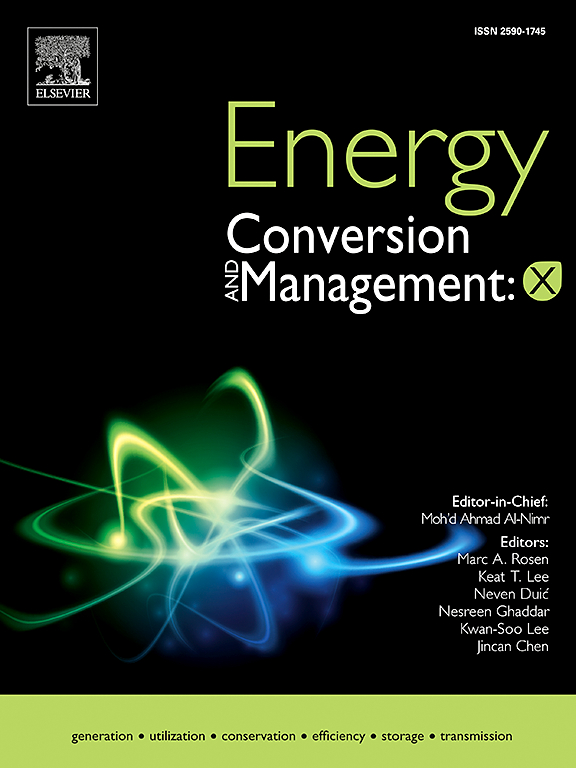LCA and exergy-economic evaluation of a biogas-to-fuels system using CO2 hydrogenation and exhaust gas recycling
IF 7.1
Q1 ENERGY & FUELS
引用次数: 0
Abstract
The hydrogen economy is receiving more attention from the global energy industry, highlighting its crucial impact on global energy policies. In this context, the use of hydrogen in the synthesis of biomethanol is essential to the chemical industry and has great promise as a sustainable fuel for global transportation. This study evaluates a system that uses anaerobic digestion, high-temperature electrolysis, and biogas refining to produce biomethane and biomethanol. Novelties of the present study are heat integration and oxygen management between different subsystems, introducing liquified natural gas regasification and gas turbine cycles, and exergy-economic analysis and life cycle assessment using Aspen Plus and Simapro software, respectively. Economic analyses demonstrate lower levelized costs of natural gas and shorter payback periods for systems incorporating liquified natural gas and gas turbine cycles. Moreover, life cycle assessment results indicate a significant reduction of 53% in climate change impacts and 70% in resource use impacts for systems featuring liquified natural gas and gas turbine units. Exergy efficiency improves from 85.07% to 94.4%, largely due to the high exergy efficiency (98.06%) of the liquified natural gas and gas turbine units. By comparing different power sources, the wind turbine scenario demonstrates the potential for significant reductions in climate change and resource consumption compared to those of Poland’s electricity mix.
求助全文
约1分钟内获得全文
求助全文
来源期刊

Energy Conversion and Management-X
Multiple-
CiteScore
8.80
自引率
3.20%
发文量
180
审稿时长
58 days
期刊介绍:
Energy Conversion and Management: X is the open access extension of the reputable journal Energy Conversion and Management, serving as a platform for interdisciplinary research on a wide array of critical energy subjects. The journal is dedicated to publishing original contributions and in-depth technical review articles that present groundbreaking research on topics spanning energy generation, utilization, conversion, storage, transmission, conservation, management, and sustainability.
The scope of Energy Conversion and Management: X encompasses various forms of energy, including mechanical, thermal, nuclear, chemical, electromagnetic, magnetic, and electric energy. It addresses all known energy resources, highlighting both conventional sources like fossil fuels and nuclear power, as well as renewable resources such as solar, biomass, hydro, wind, geothermal, and ocean energy.
 求助内容:
求助内容: 应助结果提醒方式:
应助结果提醒方式:


